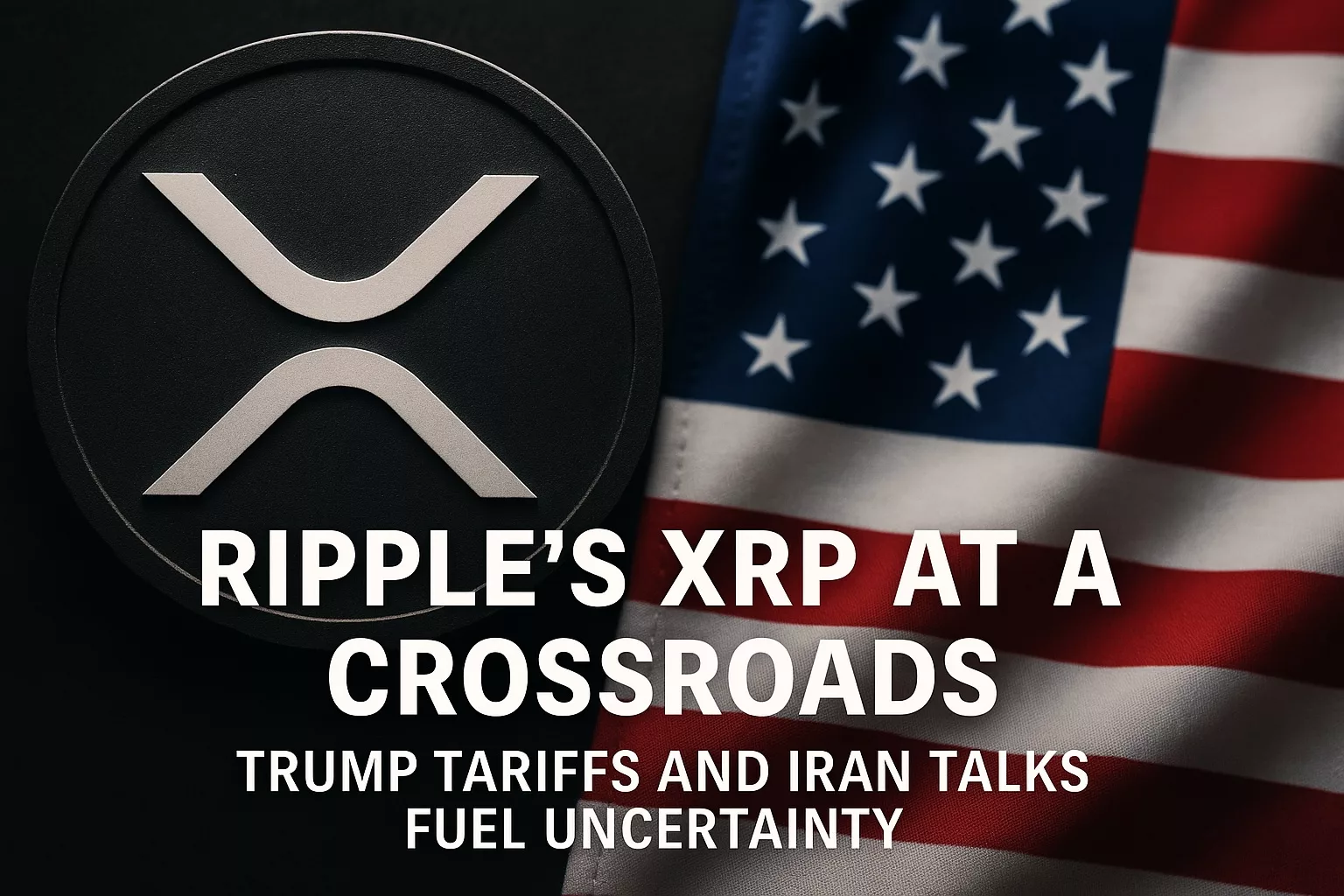
Ripple’s XRP has found itself in turbulent waters, caught between the latest U.S. tariff measures, shifting geopolitical dynamics, and the ever-evolving state of the global crypto market. As of April 11, 2025, the price of XRP is exhibiting high volatility, reacting sharply to developments on multiple fronts, including President Donald Trump’s tariff policies and the upcoming nuclear talks between the U.S. and Iran. These elements are not only reshaping traditional markets but are increasingly bleeding into the cryptocurrency world, challenging the narrative that digital assets operate independently from global political and economic turmoil.
The market whiplash began on April 3, when President Trump introduced sweeping 10% tariffs on imports from countries deemed economically aggressive towards the U.S. The announcement sent shockwaves through the financial system. The S&P 500 plunged by more than 10%, while major cryptocurrencies, including Bitcoin and XRP, saw immediate pullbacks. XRP dropped over 3.6% in a single day, falling to $2.04.
Just four days later, as markets scrambled to digest the implications, XRP slid further to $1.67—its lowest point since November 2024. The move reflected not only investor uncertainty around the tariffs but also the rising dollar, higher inflation expectations, and a potential economic slowdown. Cryptocurrencies, which many had hoped would act as safe havens, appeared more aligned with risk-on assets like tech stocks.
But in a surprise reversal, Trump announced on April 9 that most of the tariffs would be temporarily suspended for 90 days, excluding those on China, which would remain at a steep 125%. In reaction, XRP bounced back, rallying nearly 19% and crossing back over the $2 mark. The token briefly reached $2.08 on April 10, signaling renewed speculative interest and a potentially bullish trend reversal.
While the tariffs garnered most of the headlines, parallel developments in the geopolitical arena could prove just as significant for XRP and the broader crypto market. On April 9, U.S. Secretary of State Marco Rubio confirmed that American and Iranian diplomats would meet in Oman for direct nuclear negotiations. The discussions are aimed at diffusing tensions and potentially lifting economic sanctions that have crippled Iran’s economy.
A successful outcome could lead to a flood of Iranian oil entering global markets, bringing down energy prices and easing inflationary pressures. This, in turn, might strengthen the U.S. dollar—typically a headwind for cryptocurrencies. However, it could also signal increased global trade stability, making digital payment systems like RippleNet more appealing for cross-border financial infrastructure.
From a technical standpoint, Ripple has long positioned XRP as a bridge currency, especially in corridors affected by sanctions or where fiat-to-fiat transfers are inefficient or restricted. If U.S.-Iran relations improve and sanctions are lifted, Ripple may find new ground to deploy its technology in the Middle East, opening up liquidity options previously off-limits.
Investor sentiment around XRP remains deeply divided. On one hand, traditionalists argue that cryptocurrencies, including XRP, cannot yet serve as reliable hedges during global crises. They point to XRP’s 25% drop in the past month as evidence that it’s still susceptible to macroeconomic shocks.
On the other hand, bullish voices see the current volatility as temporary. Standard Chartered recently predicted that XRP could rise to $5.50 by the end of 2025, citing its growing adoption for cross-border payments and the upcoming regulatory clarity expected from both the U.S. and the European Union. The Digital Asset Market Structure and Investor Protection Act, currently progressing through U.S. Congress, could provide the legal scaffolding for mainstream financial institutions to increase exposure to tokens like XRP.
“We’re seeing the early signs of decoupling,” said analyst Maya Kaplan of GlobalChain Advisors. “While Bitcoin tends to move in lockstep with broader markets, XRP’s utility use case may allow it to weather storms that purely speculative assets cannot.”
Although XRP does not rely on mining the way Bitcoin does, the broader ecosystem could still be affected by tariff-induced supply chain disruptions. Increased tariffs on hardware components and high-tech imports may indirectly influence Ripple’s enterprise partnerships, particularly in regions like Southeast Asia and Latin America, where blockchain adoption is expanding rapidly.
Furthermore, uncertainty around U.S.-China trade relations could impact Ripple’s efforts to foster adoption in the Asia-Pacific region. If tensions escalate, businesses may delay tech adoption or pivot to alternatives not reliant on U.S.-origin infrastructure.
Geopolitical analysts warn that failure in the U.S.-Iran negotiations could have cascading effects across energy markets, inflation, and investor sentiment. In a worst-case scenario, rising tensions could provoke regional instability, driving oil prices sky-high and stoking fears of recession. These conditions have historically triggered selloffs in high-risk assets—a category that still includes most cryptocurrencies, XRP among them.
However, if talks succeed, it could unlock opportunities for XRP to facilitate financial inclusion in one of the most isolated economies in the world. Iran has already shown interest in blockchain to bypass traditional sanctions, and a new diplomatic climate could make Ripple’s low-cost payment solutions more viable than ever.
The next three months will be critical for XRP. As investors await the results of both the tariff pause and the Iran talks, price action is likely to remain erratic. Traders should prepare for high volume and strong price swings in either direction.
Yet beyond the noise, the fundamentals of Ripple’s mission remain intact. As cross-border payments continue to evolve, and regulatory clarity improves, XRP could emerge as one of the key beneficiaries in a post-tariff, post-sanction financial world.
Until then, however, volatility is the name of the game.
Ripple’s XRP stands at a crucial intersection where macroeconomic forces, diplomacy, and blockchain innovation collide. With U.S. tariffs shaking the global economy and Iran nuclear talks set to redefine Middle Eastern diplomacy, XRP investors are navigating uncharted waters. While short-term risks abound, the longer-term view suggests potential for significant growth—provided Ripple can continue to deliver on its promise of faster, cheaper, and globally inclusive payments.
For those willing to weather the storm, XRP may yet prove its worth not just as a digital asset, but as a transformative financial tool.


Get the latest Crypto & Blockchain News in your inbox.